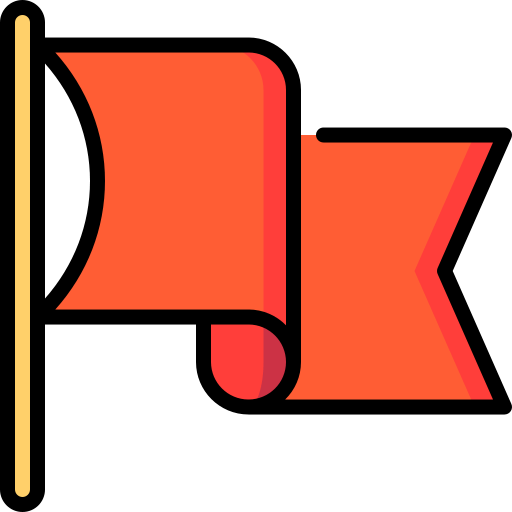Flag of France
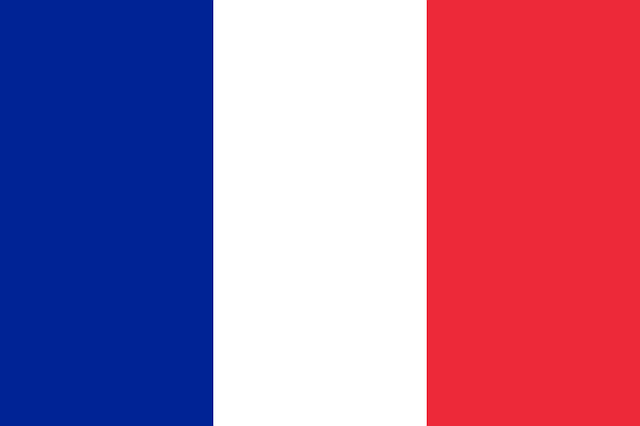
French flag
- Official approval of the flag: 1794 year
- Flag emoji: 🇫🇷
- Period: Modern flags
- Type of flag: Flags of countries • Flags of continental countries
- Belonging to the continent: Europe
- Colors on the flag: white • blue • red
- Emblem on the flag: Without emblem
France is located in the western part of Europe, bordering Belgium, Germany, Switzerland, Italy, Spain, Luxembourg, and Monaco. Its capital is Paris. The country’s area is 643,801 km², making it the largest state in the European Union. The population of France is approximately 67 million people. The official language is French, but a significant proportion of the population speaks English and other European languages. The current status of the republic was obtained in 1958. The national composition is diverse, including French, Algerians, Moroccans and other groups. France is known for its cultural heritage, winemaking, and world monuments such as the Louvre and the Eiffel Tower.
The French flag, also known as the tricolor, is one of the most recognizable symbols of France. Consisting of three vertical stripes of equal width: blue, white, and red, it represents the country’s values of freedom, equality, and fraternity. In addition to its history and meaning, the flag has clearly defined technical characteristics: colors, proportions, and display order.
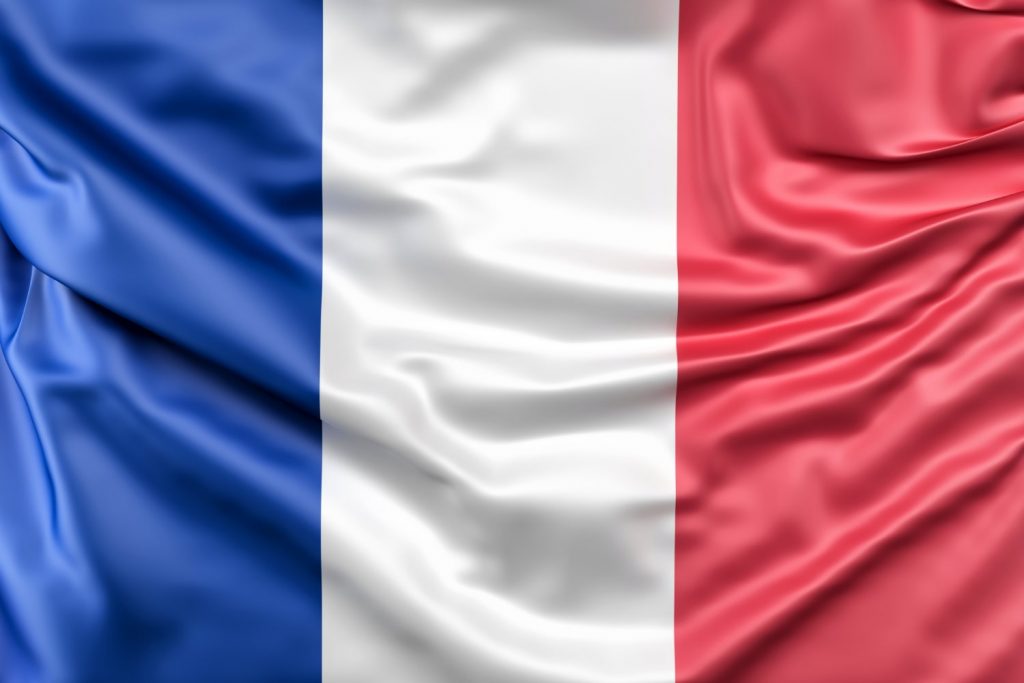
History of the French flag
The modern tricolor appeared during the French Revolution, a turning point in the country’s history. Before that time, France used a variety of royal flags. The most famous of them was blue with golden lilies, which symbolized the monarchy.
The origin of the tricolor
- Blue and red are the historical colors of Paris. They were used by revolutionaries and rebels who opposed royalty.
- White represented the royal Bourbon dynasty. The inclusion of this color was meant to symbolize the unification of the revolutionary spirit with national traditions.
The tricolor in its modern form was first approved on February 15, 1794, as the official flag of the new republic. This flag symbolized the end of the monarchy and the proclamation of a new era.
Changes in different periods
- During the restoration of the monarchy in the 19th century, the flag was temporarily replaced by royal symbols.
- In 1870, after the establishment of the Third Republic, the tricolor finally returned as the national flag of France.
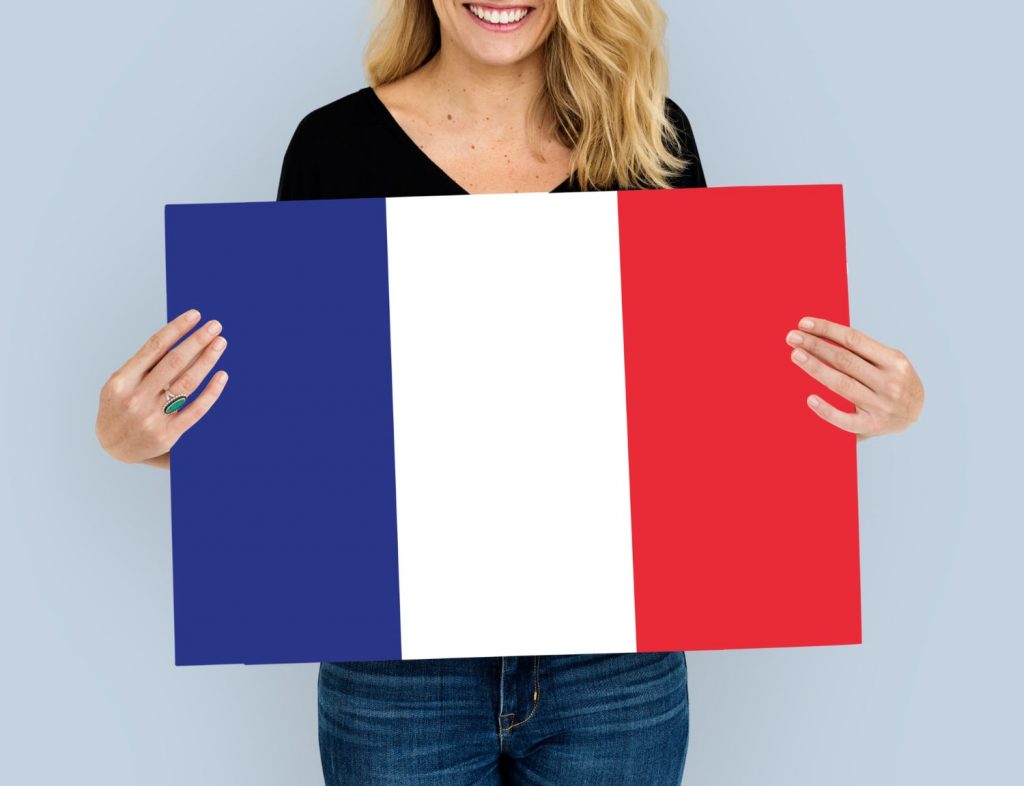
Colors of the French flag
Meaning of the colors
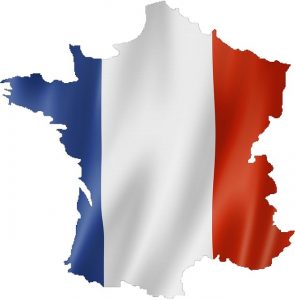
Each of the three colors of the French flag has a deep symbolic meaning:
- Blue:
- Symbolizes freedom, the key idea of the French Revolution.
- It is associated with patriotism and loyalty.
- White:
- It represents equality and traditional purity that unites the nation.
- Previously associated with the monarchy, but now with national unity.
- Red:
- It is a symbol of brotherhood and revolutionary blood shed for freedom.
- It represents the courage and energy of the nation.
Color codes.
To ensure uniformity in the display of the flag, the exact shades of its colors are officially regulated. Below are the codes in different color systems.
- Blue:
- RGB: (0, 85, 164)
- HEX: #0055A4
- CMYK: (100, 70, 0, 30)
- Pantone: 286 C
- White:
- RGB: (255, 255, 255)
- HEX: #FFFFFF
- CMYK: (0, 0, 0, 0)
- Pantone: White
- Red:
- RGB: (239, 65, 53)
- HEX: #EF4135
- CMYK: (0, 90, 80, 0)
- Pantone: 485 C
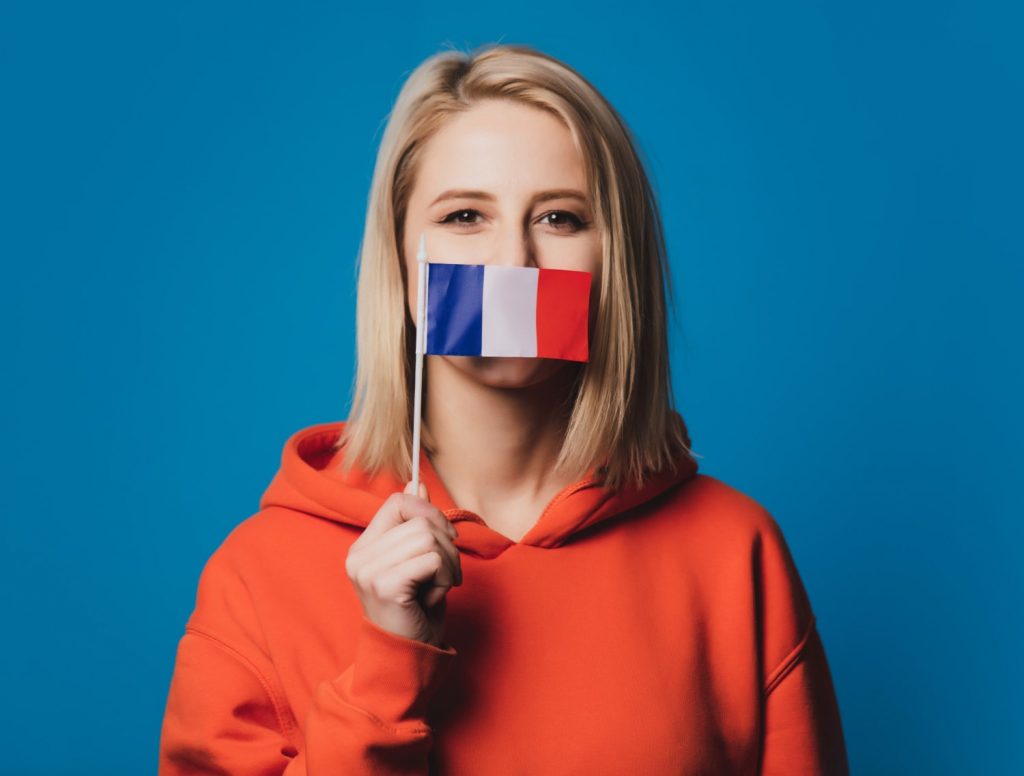
Format and proportions
The French flag has a standardized format to ensure its correct display.
Flag proportions
The standard aspect ratio of the flag is 2:3. This means that the height of the flag is two-thirds of its width. The vertical stripes divide the width into three equal parts.
The arrangement of the stripes
The order of the flag colors (from left to right):
- Blue stripe (always on the hoist side).
- White stripe (in the center).
- Red stripe (at the edge).
In case of a vertical flag, the blue stripe should be on top (or on the left, depending on the orientation).
Impact of the changes
Until 1976, the blue color was lighter, but later it was changed to a deep dark blue, which is closer to the original revolutionary flag. In 2020, French President Emmanuel Macron officially returned the dark blue shade to emphasize the historical significance of the tricolor.
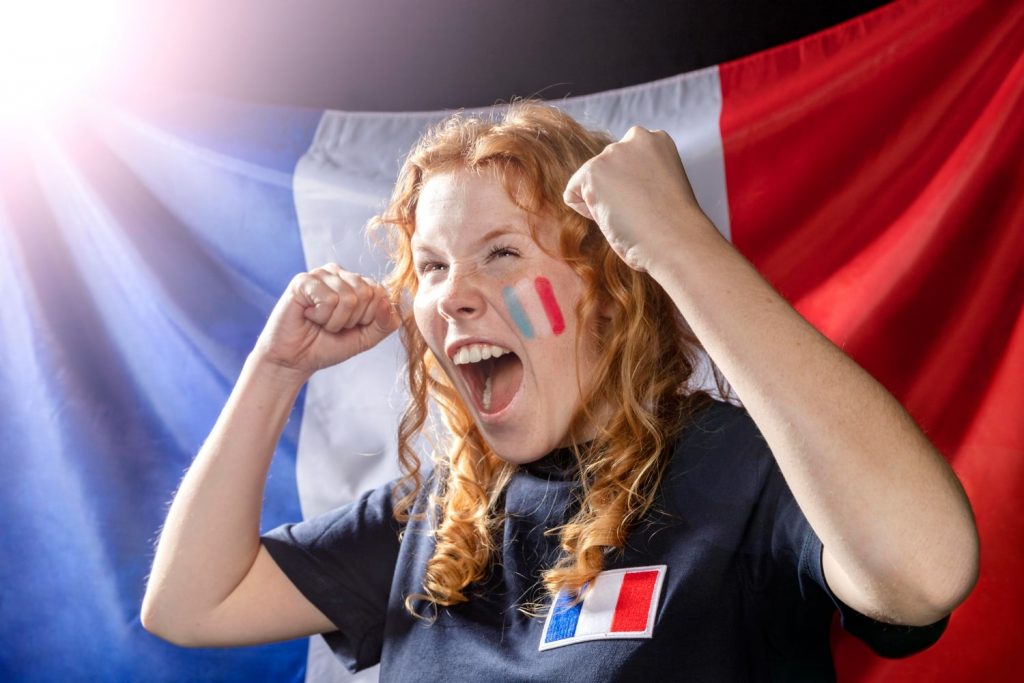
Interesting facts about the French flag
- The French tricolor was one of the first national flags of the modern type, and its design has influenced the flags of many other countries, such as Italy, Romania, and Russia.
- In international events and sports, the tricolor is always displayed according to official standards to ensure its authenticity.
- In times of revolution, the flag has served as a source of inspiration for many national liberation movements.
The French flag is more than just three colors. It symbolizes a long history of struggle for freedom, equality and fraternity. Its precise design, color shades and proportions reflect the attention to detail that is part of French culture. Today, the tricolor continues to be a source of pride for the French and a symbol of the ideals that France promotes around the world.
